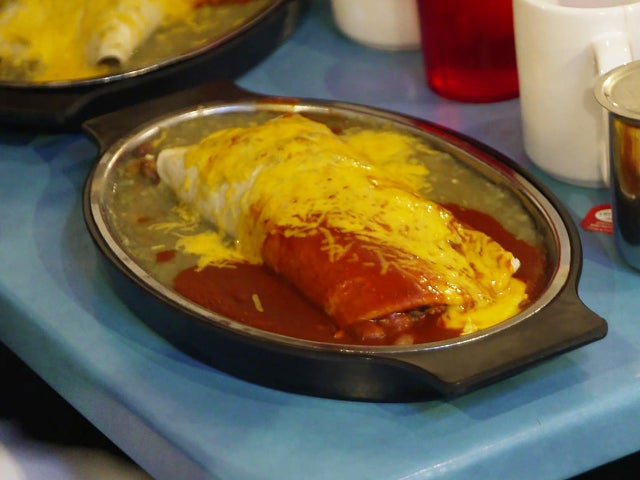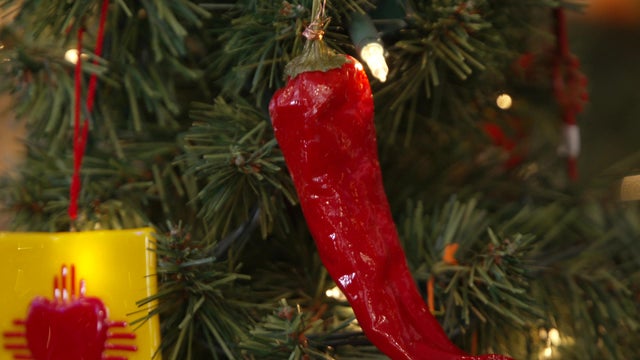A New Mexico Christmas: Red and green chiles
It's beginning to look a lot like Christmas on the streets of Santa Fe, New Mexico. The central plaza sparkles with lights; farolitos ("little lanterns") line the rooftops; even City Hall is showered in shades of bright red and green. But you can find those colors all year long in the kitchens of New Mexico, where the meaning of "Christmas" takes on a different flavor.
At Tia Sophia's restaurant, diners deck their dishes with sauces made of red or green chiles. When they can't decide, they get a bit of both.
"There's different complexities to the red and the green, but they're both amazingly good," said one customer. "That's why I get 'Christmas,' because I love both of them so much."
Chiles are EVERYWHERE in New Mexico. The state license plate proclaims it the "Chile Capital of the World." They're collected in bunches, decorated with bows, even used to trim the trees. But when it comes to cuisine, they're far more than ornamental.
"It rankles me when people call the chile a sauce," said Nick Maryol, the owner of Tia Sophia's. "It's my own personal hang-up, I'm sure. But it's such an integral part of the meal."
Nick's parents opened the popular Santa Fe restaurant in 1975. According to local legend, a former waitress, Martha Rotondo, was the first to call the colorful chile combo "Christmas." "She started to encourage people to get both, get both the red and the green," said Maryol. "And, you know, one day she hit upon the idea of calling it Christmas."
How true is that story? "90 percent!" he smiled.
Today, it's New Mexico's unofficial state question. But the choice between red and green isn't as black-and-white as you might think. It's all technically the same plant.
"So really, the difference between red chile and green chile is the difference between a grape and a raisin; one is fresh, one is dry," said chef Mica Chavez, who teaches courses on New Mexico cuisine at the Santa Fe School of Cooking.
When it comes to mixing the two, Chavez said, "We're the only region in the Southwest to do this. I'm originally from El Paso, Texas. You see red chile. You see green chile. You don't see red and green."
Hatch, N.M. is the state's best-known chile-producing region. "Because we have such hard, mineral-rich, packed soil, our chile is going to take on a different flavor than something grown, say, in California," said Chavez.
Those green chiles, allowed to ripen and dry in the sun, turn red, creating a different texture and a somewhat sweeter, more complicated flavor.
Chavez explained, "People come for the green, but you stay for the red!"
- RECIPES: Enchiladas and Red and Green Chile Sauces (from Santa Fe School of Cooking)
While the chile typically ends up on dishes like enchiladas (which means "with chile"), it can go on anything. Get your omelette New Mexican Christmas-style!
You never need a reason, or a season, to consume chiles in New Mexico. According to Maryol, "New Mexicans eat chile three meals a day, seven days a week, 365 days a year."
Chavez said, "People from around the world don't have the same obsession with chile that we do. We realize that. We don't understand it, but we realize it!"
Here, EVERY DAY can be Christmas.
For more info:
- Tia Sophia's Restaurant, Santa Fe (Facebook)
- Chef Mica Chavez
- Tinworks by Richard Gabriel Jr. (Facebook)
Story produced by Dustin Stephens. Editor: Chad Cardin.


